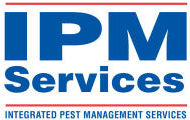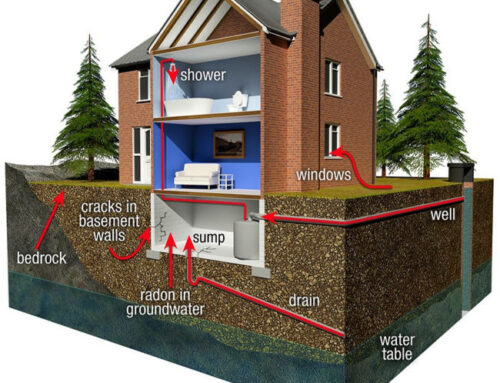How do you know your health is at risk if there are no ways to recognize a potential threat? That’s exactly how radon gas operates. Radon is a natural gas found in the environment. Radon is a radioactive gas that comes from the breakdown of uranium in soil, rock, and water, and then is emitted from the ground and into the air we breathe.
Radon cannot be seen, smelled, or tasted. Increased levels of radon inside your home pose a threat to the health of you and your family. Radon gas is the second leading cause of lung cancer in the United States and at unsafe levels, it carries approximately 1000 times the risk of death as any other EPA carcinogen.
Nationwide, and even right here in Louisville, KY, 1 in every 15 homes falls victim to increased levels of radon gas. As a trusted name in radon testing and mitigation services, Integrated Pest Management Services is here to keep your home and your family safe.

We’ve gathered the most frequently asked questions to keep you informed of what radon is and why it should be monitored.
Uncovering the Facts: Frequently Asked Questions about Radon
Question #1: What is radon?
Radon is a radioactive gas. It is produced naturally from the breakdown of uranium in soil, rock, and water. It is colorless, chemically-unreactive, and is emitted from the ground. You cannot see, smell, or taste radon. It is a carcinogen, and one of the leading causes of lung cancer. It can also be a huge risk to children, due to their higher respiration rates.
Question #2: Where does radon come from?
Radon gas is found in the environment, all around us. It starts with the breakdown of uranium. As it is created in the soil, radon typically moves to the air above, and then enters our homes. Once radon is inside the home, it often is trapped and builds up over time. This is why the radon level inside your home may be higher than radon levels outside. Because radon is a gas, it can come in through any opening in your home, including construction joints, cracks in the foundation, gaps in floors or around pipes, and windows. It may also enter your home’s water supply through ground water.
Question #3: What is a high radon level?
Radon gas is measured in picocuries per liter (pCi/L). A curi is a measure of radioactivity. In the outside air, the level of normal radon is about .4pCi/L. For a home, the average indoor radon level is estimated to be about 1.3 pCi/L.
According to the Environmental Protection Agency (EPA), radon levels are considered dangerous when readings reach a level of 4.0 pCi/L or higher. However, even levels that are below this level can still pose some risk to you and your family if not monitored and maintained over time.
Question #4: What is radon testing?
Radon testing determines the level, or amount, of radon inside your home. Homes with high levels of radon have been found all across the United States, and even right here in Louisville, KY. Because radon levels can change significantly in a short space, the property next door may have much more (or less) radon than yours.
There are short and long term methods of testing, which can determine how extensive your plan of action must be based on the radon levels present inside your home. Testing for radon gas is relatively easy, and a very common process for homeowners. Fixing increased levels of radon reduces the risk of developing lung cancer for you and your family down the road.

Question #5: How do I test for radon?
Continuous radon testing is the most effective means of getting accurate results for levels of radon inside your home. This system is a small, electric monitor that plugs into a standard outlet. Every day the monitor gives you a running average of radon levels. Continuous testing can be done for a few days, a few weeks, or several months. Most radon tests last between 2-7 days. Although you can purchase radon testing systems on your own, contacting a certified radon specialist is always recommended for proper and accurate radon testing.
Question #6: How do I get rid of radon?
If your radon test confirms high radon levels in your home, there are several things you can do to reduce current levels and prevent them from increasing. Here are a few basic steps to get started:
- In some cases, sealing cracks in floors, pipes, and walls may help to reduce radon. This is a simple starting point.
- You can also use fans to help increase the airflow in your home.
- If you have a sump pump, install an airtight cover on it (choose one that allows access to your sump).
- Cover the soil in your crawl space with polyurethane plastic sheeting (normally a minimum thickness of 6 mil. will do the trick) and tightly attach it to the foundation walls. You can find the plastic sheeting at most home centers.
- Finally, talking to a professional technician about installing a radon mitigation system for continued excess levels.
Question #7: What is radon mitigation?
Radon mitigation is simply reducing the level of radon in your home or business. A professional and certified radon technician can ventilate your home with PVC piping to intentionally draw radon gas up from the soil and out of your house.
The most effective system is a vent pipe placed in the sump pit (if you have a sump pump) or through a hole made under your concrete floor slab. Next, a special in-line fan is strategically placed in the attic or to the outside of the house to draw air through the vent and radon gas out of your home.
Question #8: How much does radon mitigation cost?
Radon mitigation, nationally, averages between $1,200 – $2,500. However, because every home and every radon mitigation company is different, these prices can fluctuate drastically. If you’re in Louisville, KY or the surrounding areas, contact our certified radon specialists today for your personal pricing estimate.
Find a Radon Testing and Mitigation Specialist Near You
Integrated Pest Management Services is certified by the National Environmental Health Association National Radon Proficiency Program (NEHA – NRPP) and our radon specialist is also licensed by the American Association of Radon Scientists and Technologists (AARST). Call us today to help you protect your home and family from radon.
For those outside of our service area, the Kentucky Cabinet for Health and Family Services (CHFS) offers additional resources for finding a certified radon specialist to help monitor the radon levels inside your home.



